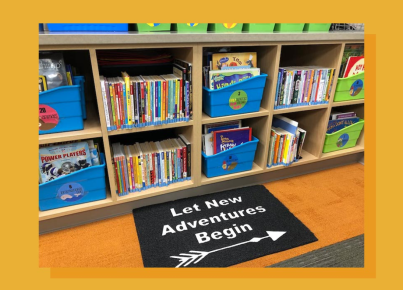Introduction:
A well-curated classroom library can be a valuable asset for educators and students alike. In this article, we will explore the key steps to building a successful classroom library, focusing on resources relevant to the United States education system. Let’s dive in!
1. Determine the Purpose:
– Define the purpose of your classroom library, whether it’s supporting reading instruction, enhancing student engagement, promoting diverse literature, or a combination of these objectives.
2. Assess the Needs and Interests:
– Understand the reading levels, interests, and needs of your students to ensure your classroom library caters to their varied preferences and abilities.
3. Create a Budget:
– Determine a realistic budget for your classroom library. Consider allocating funds for purchasing new books, subscribing to online resources, attending book fairs, or seeking donations.
4. Curate a Diverse Collection:
– Include various genres, themes, and reading levels to cater to different students’ interests and reading abilities. Emphasize diverse literature to promote representation and cultural awareness in your classroom.
5. Organize Your Library:
– Establish a systematic organization system that makes it easy for students to find and return books. Consider organizing by genre, author, or reading level, and label shelves accordingly.
6. Establish Library Rules:
– Clearly communicate and enforce rules regarding book borrowing, care, and return. Teach students about book handling and promote responsibility in maintaining the library’s cleanliness and organization.
7. Engage Students:
– Encourage student involvement by creating opportunities for them to suggest books, write book reviews, or participate in book clubs. Foster a love for reading by connecting students with books that align with their interests.
8. Access Online Resources:
– Utilize online platforms and resources to expand your classroom library’s offerings. Explore digital libraries, e-books, audiobooks, or educational websites that provide free or affordable access to a wide range of content.
9. Seek Community Support:
– Engage parents, local libraries, bookstores, and organizations to contribute to your classroom library through book donations, sponsorships, or collaborations. Consider organizing book drives or hosting literacy events.
10. Continually Update and Evaluate:
– Regularly assess the relevance, condition, and appeal of books in your classroom library. Replace outdated or damaged books and regularly introduce new titles to keep the collection fresh and appealing.
Conclusion:
Building a classroom library is an ongoing process that requires dedication, creativity, and adaptability. By following these steps and considering the unique needs of your students and the resources available in the United States, you can create a vibrant and engaging reading environment that enhances literacy skills and fosters a lifelong love for reading.





